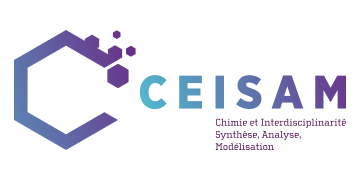
AZOTICS - Nanoparticules photostimulables pour l'imagerie d'inflammation en système microvasculaire par microscopie photoacoustique à fort contraste
AZOTICS est un projet pluridisciplinaire porté par Eléna ISHOW (coordinatrice) réunissant des équipes en chimie, physique et biologie, a deux objectifs principaux : l’un fondamental, consistant à mieux comprendre les échanges d’énergie optique, thermique et mécanique à l’échelle nanométrique ; l’autre plus appliqué, axé sur le développement d’outils d’imagerie multimodaux pour le suivi en temps réel de processus inflammatoires.
Détails du projet
Imaginez un faisceau laser, un détecteur d’ultra-sons et des cellules. Que diable peut-on faire de tout cela ? Il ne s’agit pas ici de réaliser l’échographie d’un fœtus dans le ventre de sa mère, mais de parvenir à suivre des cellules circulant dans les veines et susceptibles de renseigner sur la présence d’une maladie ou d’un dysfonctionnement. Vous avez donc compris que l’on a affaire à quelque chose de beaucoup plus petit et de beaucoup plus mobile qu’un fœtus ! C’est donc ici qu’interviennent de tout petits objets, 1000 fois plus fins qu’un cheveu ; en un mot, des nanomatériaux biodégradables qui serviront à marquer les cellules du système immunitaire pour les suivre in vivo. Par quel procédé ? Et bien grâce à l’imagerie photoacoustique, une technique d’imagerie émergente qui permet de visualiser jusqu’à quelques cm de profondeur avec la possibilité de pister des cellules uniques. C’est donc ici qu’intervient le laser, utile pour exciter les nanomatériaux qui, en absorbant le faisceau lumineux, vont se déformer de manière réversible et créer une onde mécanique, alors détectée par ultra-sons. Dans le projet pluridisciplinaire AZOTICS réunissant des équipes nantaises et grenobloises, des chimistes fabriqueront les nanomatériaux photodéformables, des physiciens mesureront leurs propriétés mécaniques à l’échelle nanométrique, des opticiens développeront une instrumentation performante pour activer ces nanomatériaux dans des cellules, et enfin des biologistes s’intéresseront au marquage par les nanosondes photoacoustiques de cellules du système immunitaire, à savoir des macrophages, pour in fine imager leur évolution dans un contexte inflammatoire.
Membres du projet
Partenaires extérieurs
Laboratoire Interdisciplinaire de Physique (LIPHy)
UMR CNRS 5588
Institut des Matériaux Jean Rouxel (IMN)
UMR CNRS 6502
Centre de Recherche en Cancérologie et Immunologie Intégrée Nantes Angers (CRCI2NA)
INSERM U1307, UMR CNRS 6075
